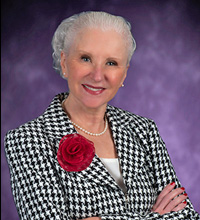A story is like a star:
It is born in the past;
Illuminates the present;
And will shine in the future.
~J.R. Carroll
Stories Trump Things
Families understand legal wills. Research by Accenture indicates that during the next few decades, Baby Boomers will pass on $30 trillion in tangible assets.[1] Certainly material possessions are important. But do you know that two separate Allianz American Legacies studies affirm that non-financial bequeathals are more important than things?[2] And these “non-financial bequeathals” include family stories.
Jay Hughes, author of Family Wealth, wrote, “Stories inoculate families against the ‘shirtsleeves to shirtsleeves in three generations’ syndrome. Every family I know that is successfully preserving its wealth sets aside time at family gatherings for the sharing of its unique history.”
Charles Collier, author of Wealth in Families, wrote, “The best practices of successful families include tell[ing] and retell[ing] the family’s most important stories.”
Mrs. Lavern Norris Gaynor, heiress to the Texaco fortune, said, “It was my obligation to tell my story. It is my true legacy. I can leave this world with a peaceful heart, because through my story the Norris heritage of gracious giving will indeed touch tomorrow.”
Human beings are what I call homo narrans—storytelling animals. Our brains are evolutionarily hard-wired to think in, tell, and remember stories. Our stories are the heartbeat of the human experience. They teach us who we were, who we are, and who we can be.
Someday List Syndrome
If stories are so important, why do families often put off, or even avoid, passing on stories that preserve their wisdom, hard-learned lessons, traditions, beliefs, hopes—the intangibles that are their true legacy?
Answers are universal:
- We don’t have time.
- We don’t have skills.
- We don’t have resources.
- We don’t know where to start.
Thus, “tell our family story” gets relegated to the someday list. And all too often, before the someday calendar page turns, it is too late. I call it the Someday List Syndrome.
Best Practices
Over the years, I have worked with more than 40 high-net-worth families to preserve their family stories. Here is how your client families can avoid the Someday List Syndrome. The best practices below are proven, easy, and enjoyable.
Participants will need a loose-leaf notebook or a small tape recorder. Tip: Assure family members who elect to write their stories in a notebook that they should write from the heart. Their fourth grade teacher will not reincarnate and scrawl red marks on their paper.
Mason Jar Technology
- Go to Target (or your local equivalent) and buy a Mason jar or other suitable container.
- Write questions you WISH you had asked a deceased loved one on slips of paper. (These are the same questions your descendants will one day hope you answered.)
- Drop the slips of paper in your Mason jar.
- Set a weekly one-hour appointment with yourself.
- Each week, pull out one slip of paper and write your answer in your notebook or talk it into your recorder.
- Take your Mason jar to your next family gathering. Have fun passing it around and listening to the stories family members tell. Record them.
Tip: If your families need ideas to get them started, please share my list of Twenty All-Time Terrific questions.
- Tell me your first memory.
- When you were a kid, what did you want to be when you grew up? How did that turn out? How did you end up doing what you do (did, if retired) today?
- Tell me about your “road not taken.”
- Describe a typical family meal when you were growing up. Who sat around the table? Were mealtimes important to you? Why/Why not?
- If you had all the time in the world and money was not an object, tell me what you would do.
- Tell me about the best gift you ever gave—ever received.
- Who or what is the true love of your life? Why do you say that?
- Tell me a story about a happy time in your life. Follow up with: Tell me a story about a sad time in your life.
- Pretend you are going away on a long trip. What will you write on the note you leave behind on the kitchen table?
- Tell me about your childhood home—your childhood neighborhood.
- Tell me a story about your first date—who was it with, what did you do, and where did you go? Did it end with a goodnight kiss? Why or why not?
- Tell me a secret.
- How do you hope you will be remembered?
- Tell me about a recurring dream you’ve had throughout your life and what that dream has come to mean to you.
- Tell me a story about facing a huge challenge. What did you learn?
- Tell me a story about your favorite tradition—holiday or otherwise.
- When you’re feeling down, what makes you smile?
- If you ruled the world, what changes would you make?
- Pretend you are creating a time capsule that will be opened 100 years from now. What will you put in it to represent your life and your lifetime? Why?
- Tell me a story about a time and place where you felt truly happy—truly at peace with yourself and your life.
Other Suggestions:
Life in a Cracked Teacup
- Identify heirlooms that are important to you.
- Photograph each one.
- Tape the pictures in your notebook.
- Ask yourself questions that reveal the heirloom’s story:
- Who gave it to you?
- When did you receive it? Was it a special occasion?
- How old is it?
- What memory do you associate with it?
- Who do you want to inherit your treasure?
- Write your answers in your notebook or talk them into your recorder.
- Share photos and stories with family members. This will inspire them to document their own treasures. You might even create a blog or website that shares your stories.
Photo Op
- Locate boxes stuffed with old pictures.
- Select favorites.
- Tape the pictures in your notebook.
- Study them, one at a time, and ask yourself the following questions:
- Who is in the picture?
- What date/time of year was the picture taken?
- What was the event?
- Why was it important/fun/happy/sad/exciting?
- Write your answers in your notebook or talk them into your recorder.
- Share photos and stories with family members. Don’t be surprised when they ask you to tell stories about all your pictures.
Live Forever
A Native American adage predicts, “Tell me a fact and I’ll learn. Tell me a truth and I’ll believe. But tell me a story, and it will live in my heart forever.”
Bequeathing wealth means so much more than bequeathing things. Astute advisors will get it. You will not allow your families to neglect their stories—their true legacy—the legacy that will live in the hearts of their descendants forever.
[1] The “Greater” Wealth Transfer: Capitalizing on the intergenerational shift in wealth
About the contributor
 Judith Kolva is founder and CEO of Legacies in Ink. She is a professional personal historian who earned a PhD in the psychology and practice of personal history. Judith can be reached at judith@legaciesink.com.
Judith Kolva is founder and CEO of Legacies in Ink. She is a professional personal historian who earned a PhD in the psychology and practice of personal history. Judith can be reached at judith@legaciesink.com.





